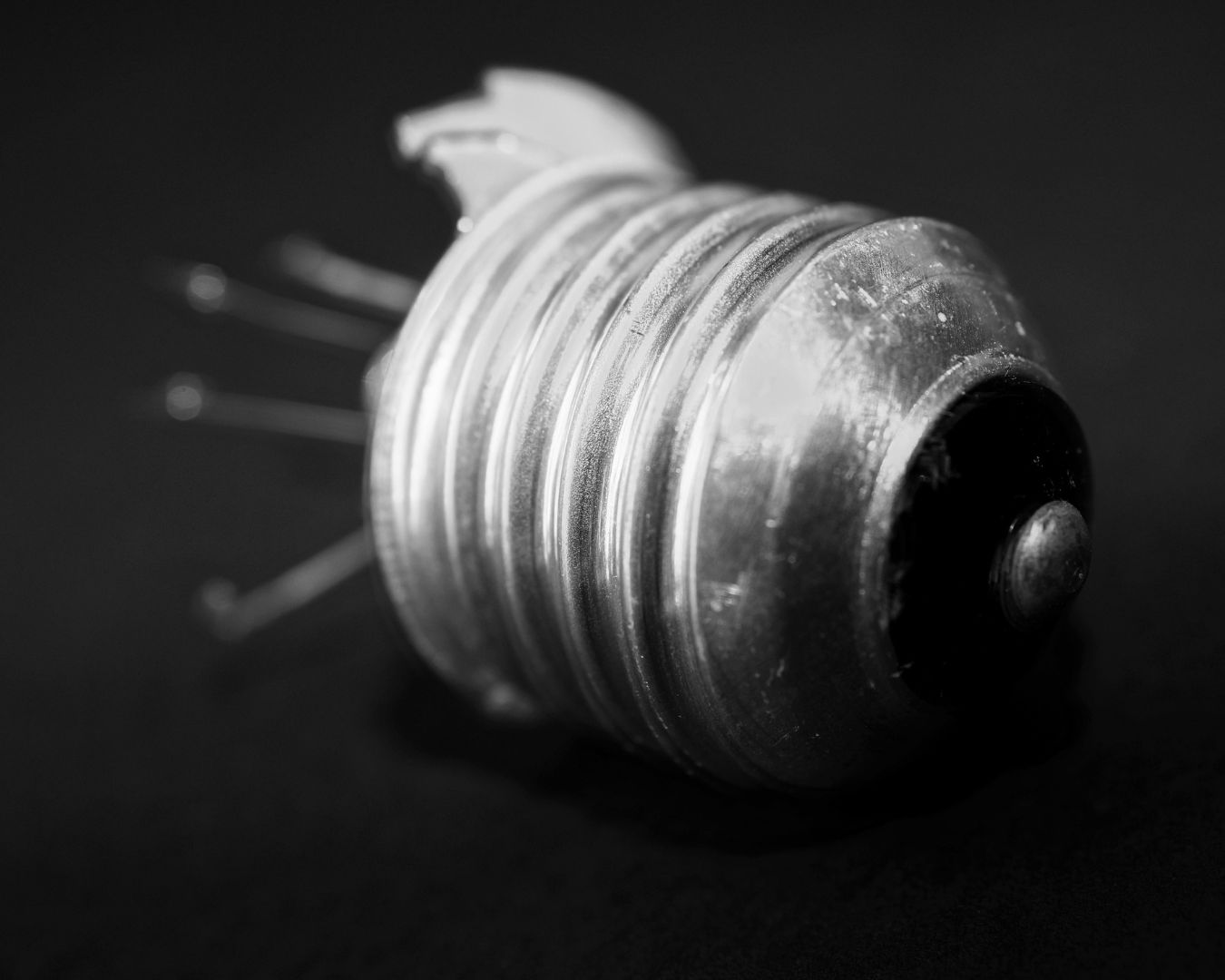“They don’t make them like they used to.”
A line we’ve all heard countless times from the older generations. It implies that products now easily break and can’t compare to how sturdy things were made in the old days.
What if we told you that back in the late 1920s, if you said the exact words about your light bulb, “They don’t make them like they used to,” you’d be 100% correct? If you bought a light bulb in 1921, it would last you 2,000 hours or even more.
However, if you had bought the same light bulb in 1924 and the years that followed, it would have lasted only 1,000 hours. The sad part? It was designed that way on purpose.
In this article, we’ll uncover one of the largest global cartels and how this bold move by major lightbulb producers would shape product design and manufacturing today, setting a precedent for planned obsolescence.
This is the story of how a group of corporations dimmed the lights on innovation—not for technical reasons, but for profit.
What Was the Phoebus Cartel?
Imagine a world where an international alliance of light bulb manufacturers was made. And these manufacturers, rather than competing for customers, decided to conspire against them instead.
You really don’t have to imagine it because that’s the Phoebus Cartel, otherwise known as the “Great Light bulb Conspiracy”. It’s the Illuminati of illumination, if you will, formed in 1924. It was, at the time, a secret alliance of the world’s largest light bulb manufacturers that banded together to do the unthinkable: intentionally reduce the lifespan of incandescent light bulbs. All in the name of profit. You read that right.
If this is starting to sound like a corporate thriller, that’s because it is. And it was involving a recently invented household item at the time, the incandescent light bulb.
Let’s look at how this group of manufacturers nearly rewired the world’s lighting future for the worse.
Companies Involved and Their Role
So, which small-time light bulb manufacturer would do this to their customers? Sike! The Phoebus Cartel was made up of a roster of lighting heavyweights, not small-time manufacturers:
- Osram (Germany)
- Philips (Netherlands)
- Tungsram (Hungary)
- Compagnie des Lampes (France)
- British Thomson-Houston (UK)
- General Electric (GE) via its overseas affiliate, International General Electric
This wasn’t your run-of-the-mill group of companies playing market gods. The cartel was highly organised. Members agreed to share technology, standardise lightbulbs, and—here’s the kicker—limit the lifespan of bulbs to 1,000 hours.
That’s right. Longer-lasting bulbs? Totally possible. But that wouldn’t make anyone rich. Limiting the lifespan means more frequent purchases from consumers, resulting in more frequent profits for the cartel members.
Even better? Anyone who failed to comply with the 1,000-hour lifespan limit was fined. Like we just said, highly organised.

Planned Obsolescence and the 1,000-Hour Limit
It might not have been mentioned in the fine print of the cartel’s documents, but the cartel, even if it wasn’t trying to, was a major contributor to capitalism. And its most notorious contribution? Helping to popularise the concept of planned obsolescence. In its simplest definition, it is designing a product to wear out sooner than necessary, so consumers have to buy more.
After the great “Eureka!” moment of Thomas Edison, before the cartel, lightbulbs could burn for 2,000 hours or more. One bulb, installed in a California fire station in 1901, dubbed as the Centennial Light, is still glowing today — that’s over 1 million hours!
You won’t hear any light bulb from after the cartel was established, even reaching a quarter of that length. So, what changed?
The cartel engineered bulbs to fail faster. But why would they do this? Why sabotage their own products? The answer is simple: Control.
- More sales: Shorter bulb life = more frequent replacements.
- Standardisation: You know how in the Incredibles movie when the villain said, “And when everyone’s super, no one will be”? Making all bulbs “equal” helped control pricing and marketing.
- Market control: With no long-lasting alternatives, consumers had no choice.
And thus this gave birth to the “They don’t make them like they used to” economy.
Public Backlash and Long-Term Consequences
It’s true when they say that no secret will forever remain a secret. Though it was decades later, the word about the cartel’s existence got out. (Finally, right?) And when it did, people were not thrilled—and rightly so!
Consumer advocacy groups and economists began to expose the cartel’s practices, and the term “planned obsolescence” was born and became the go-to ammunition for critics of corporate greed.
People were suddenly realising: products were being deliberately made worse — not for efficiency or innovation, but for repeat business. Manufacturing was no longer about quality but quantity.
The Phoebus Cartel became a symbol of how unchecked capitalism can lead to anti-consumer and anti-progress outcomes.
The Light at the End of the Tunnel
The cartel was officially disbanded by the 1940s (primarily thanks to World War II), but its legacy lingered. Governments and watchdogs began paying closer attention to corporate monopolies and consumer protection.
Stricter laws were implemented, and manufacturers eventually diversified into more efficient technologies, such as halogen, CFL, and eventually LED. Most of which far exceed the 1,000-hour limit of the Phoebus Cartel.
It’s somewhat ironic, but the Phoebus Cartel, which tried to monopolise, control, and limit the progress of our lights, ended up paving the way towards better illumination.

Lessons for the Lighting Industry Today
As evil as the Phoebus Cartel might sound, it did help spring better manufacturing regulations and consumer awareness that have improved the lighting industry as a whole. A few lessons we learned from the cartel are:
1. Durability Shouldn’t Be a Secret
We now have LED bulbs that last 25,000 to 50,000 hours. The cartel’s 1,000-hour limit will just look like a joke nowadays, but if we’re not careful, history could repeat itself, and no one wants that.
Durable design should be the default, and it should be accurate.
2. Transparency Matters
Modern consumers have evolved. Deceptive engineering and marketing don’t just look bad; they also have serious consequences. And they sell badly as well. If something is going to stop working in two years, we need to know why. Similarly, if a product is expected to last 5.7 years, we need to understand why.
This is especially true with the rise of sustainability-focused buyers.
3. Watch Out for Quiet Agreements
Competition is good, but only when it’s real and you don’t conspire with your so-called “competitors” instead. Cartels still exist today, from electronics to car parts. That’s inevitable. Though deliberate lifespan limitations are no longer an issue, price-fixing, supply manipulation, and market division haven’t gone away.
4. Consumers Have Power
That’s right. Thanks to the internet, whistleblowers, and investigative journalism, shady deals are harder to hide. With online reviews already a thing as well, consumers can finally demand better—and vote with their wallets for longer-lasting, energy-efficient, and ethically made products.
Final Thoughts: From Filament to Fallout
The story of the Phoebus Cartel is one that reminds us that even the greatest companies can be blinded by the prospect of extra income. But in an ironic turn of events, the greed of a group of businesses spurred growth and development within the industry.
The cartel is a reminder for us to be cautious and keep an open eye towards the products we buy on a regular basis (not just lights).
Today, we enjoy energy-saving bulbs, smart lighting systems, and eco-conscious design—not because companies suddenly got generous, but because people demanded better.
The Phoebus cartel was a big turning point in the history of lighting, but it was only one part of the big picture. If you wish to uncover more of this bright history, check out The Evolution of Lighting – From Fire to LED Innovation













